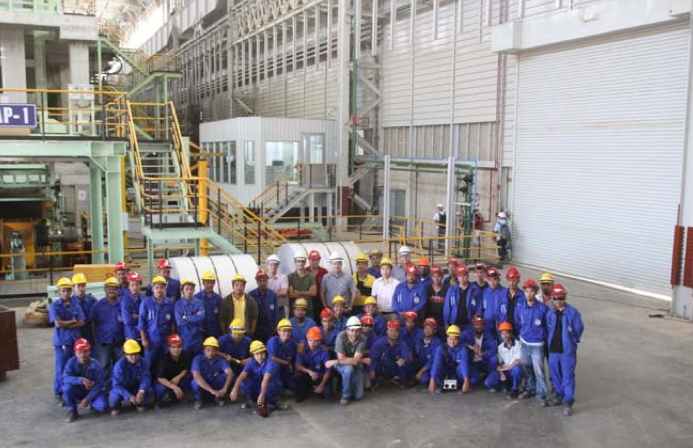Malaysia’s economic develop plans have been progressing well the last few years. Balancing the development of an economy is a tricky business and many countries slip up along the way. Good plans and policies are needed. And then good execution. Good execution requires 1) attracting investors, 2) infrastructure, 3) skilled employees, 4) the ability to get plan implemented, 5) managing the environment, 6) urban planning…
Malaysia has several key areas targeted for development, including: education, energy, health care, computer technology, finance and banking. One area of focus in the Iskandar area in Johor (southern Malaysia). Penang and Kuala Lumpor are also growing well.
Bahru Stainless (a joint venture between Acerinox Group [67% stake] a Spanish company, Nisshin Steel [30% stake] a Japanese company, and Metal One) has started production. This is exactly the type of thing that is going to determine how well Iskandar, and Malaysia do going forward.

Employees of Bahru Stainless, Johor, Malaysia
On the 12th December the first coil in the annealing and pickling line was successfully processed, which completes Phase I of the project. The current production capacity amounts to 240,000 Mt (megatonne) a year, out of which 182,000 Mt will be cold rolled. USD 370 million has been invested so far. This event is the culmination of a long process started in 2007, with feasibility studies.
The construction of Phase II is proceeding at a good pace. This phase, which start up is scheduled for the first quarter 2013, will increase the production capacity to 400,000 Mt/year. Likewise, it will allow Bahru Stainless to produce special steel grades and thin thicknesses, which are products with more added value. The investment of the second phase is estimated in USD 310 million, including a cold rolling mill, a cold annealing and pickling line, auxiliary lines, a laboratory, and an electric substation, which in the future will also feed the electric furnaces when they will be in operation.
